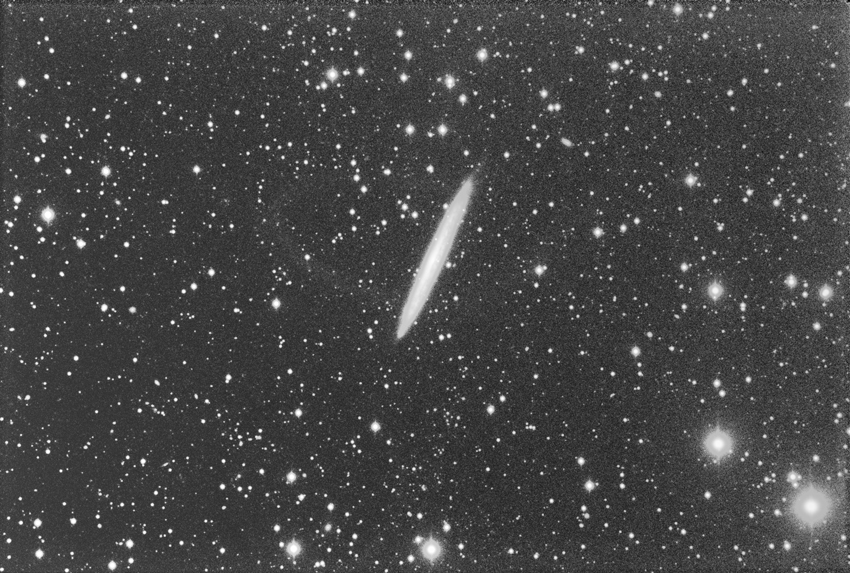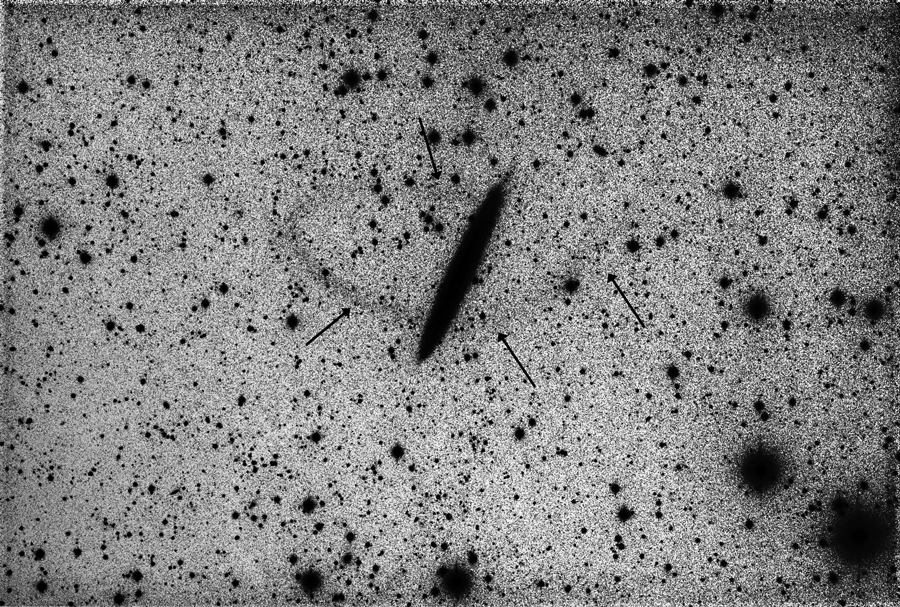© 2021 Michael A. Siniscalchi
NGC 5907
Spiral Galaxy in Draco
RA:15h 15m 52s Dec: +59° 19' 44" Distance - 23 mly Size - 12.7'x1.4'
Click on image for larger size.
Wikipedia
NGC 5907 (also known as Knife Edge Galaxy or Splinter Galaxy) is a spiral galaxy located approximately 50 million light years from Earth. It has an anomalously low metallicity and few detectable giant stars, being apparently composed almost entirely of dwarf stars. It is a member of the NGC 5866 Group.
NGC 5907 has long been considered a prototypical example of a warped spiral in relative isolation. In 2006, an international team of astronomers announced the presence of an extended tidal stream surrounding the galaxy and suggests the gravitational perturbations induced by the stream progenitor may be the cause for the warp.
The galaxy was discovered in 1788 by William Herschel. Supernova 1940A was in this galaxy.
This is the 480 minute Luminance channel highly stretched to show the faint outer tidal arms. In the image above, the front left tidal arm is very visible while the right tidal arm is very faint and only seen when highly stretched or inverted (shown below).
The inverted image below shows arrows pointing to the faint tidal arms.
The Luminance data was taken one hour before and 1 hour after the meridian flip over many nights to minimize air mass effects to get the best details and also taking advantage of the darker part of the sky to detect the faint tidal arms. I don't expect to get results of the tidal arms any better than this due to the sky darkness at my location.
The above image is a screen shot of the Topaz Gigapixel inteface showing the before (left) and after (right) processing results to bring out more galaxy structure details.


